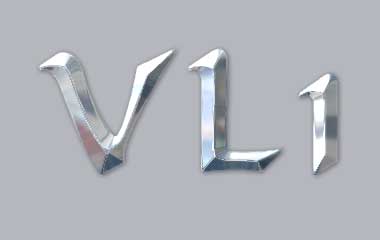

| Overview The Yamaha VL1 was the first synth to utilize 100% physical modeling technology, according to the definition of physical modeling given earlier. It generates all waveforms completely from algorithms, without using samples or any acoustic input. The waveforms are generated based on math models of the acoustics of physical instruments, which allows for some very expressive playing, and a new way of relating to a synth. I think that pretty much everyone who has seriously investigated the state of the art of physical modeling in early '96 would agree that the VL1 is the clear technology leader, considering only commercially available equipment. While the VL1 will no-doubt go down in synth history as a landmark achievement in a bold new technology that promises to bring new dimensions to musical performance, it has its problems. The fact that Yamaha has been unable to get accurate, or even usable simulations in many of its voices, and the fact that other manufacturers who invested significant R & D in physical modeling have been unable to come near Yamaha's achievement, should give you some idea of how difficult it is to do physical modeling well. In addition, the VL1 can be challenging to play if a musician wants to use the controllers and realize even part of what the new technology offers. In the same breath, let me point out that the learning curve on the VL1 is much easier than what you would have with real acoustic instruments. The beauty of the technology is that once you learn how to play skillfully with a particular controller setup, whether keyboard and breath controller or a clarinet-like wind controller, you are done learning fingering. Using that same fingering and that same breath control (plus other controllers, we hope) you will be able to play a wide array of virtual 'instruments'. On top of this, you will be able to do many things with your virtual instruments that are not possible with acoustic instruments. The promise of physical modeling is that it can allow a musician to explore and achieve new vistas of expressive playing for lead or solo parts. Because the technology requires massive amounts of computing power per voice, polyphony must be severly limited (the VL1 supports two-voice polyphony). However, in solo and lead musical parts, polyphony is not really an issue. There are four major dimensions along which we might evaluate a physical modeling (PM) synth:
In all, remember that the key requirement is to provide exquisite timbres under very expressive control for solo performances. Physical modeling should allow musicians to meet and exceed the performances of trained acoustic musicians, with less training. The VL1 fulfills quite a bit of this promise, and scores well in the four major issues listed above. Throughout this treatise on the VL1 I refer to the VL line, not just the original instrument. Most players will probably be using a VL1-m, but I will just use the term 'VL1'. The differences between the packages is discussed under that heading. Note in the subject links below that some subjects will appeal more to musicians who already own a VL1, such as the discussion of editing and voice quality, and other subjects are intended more for musicians unfamiliar with the VL1, such as 'packages', 'range of voices', 'controllers', and 'prices'. |
Ken's site has VL sounds, and it is a treasure trove of VL patches
Don't neglect his rich 'Info' section
Ian is an inventor with an interesting discussion of PM and control issues
Art has devised some novel controllers and has an informative wind synth site.
See what Art Whitfield, Steve Anderson, & the gang are up to lately